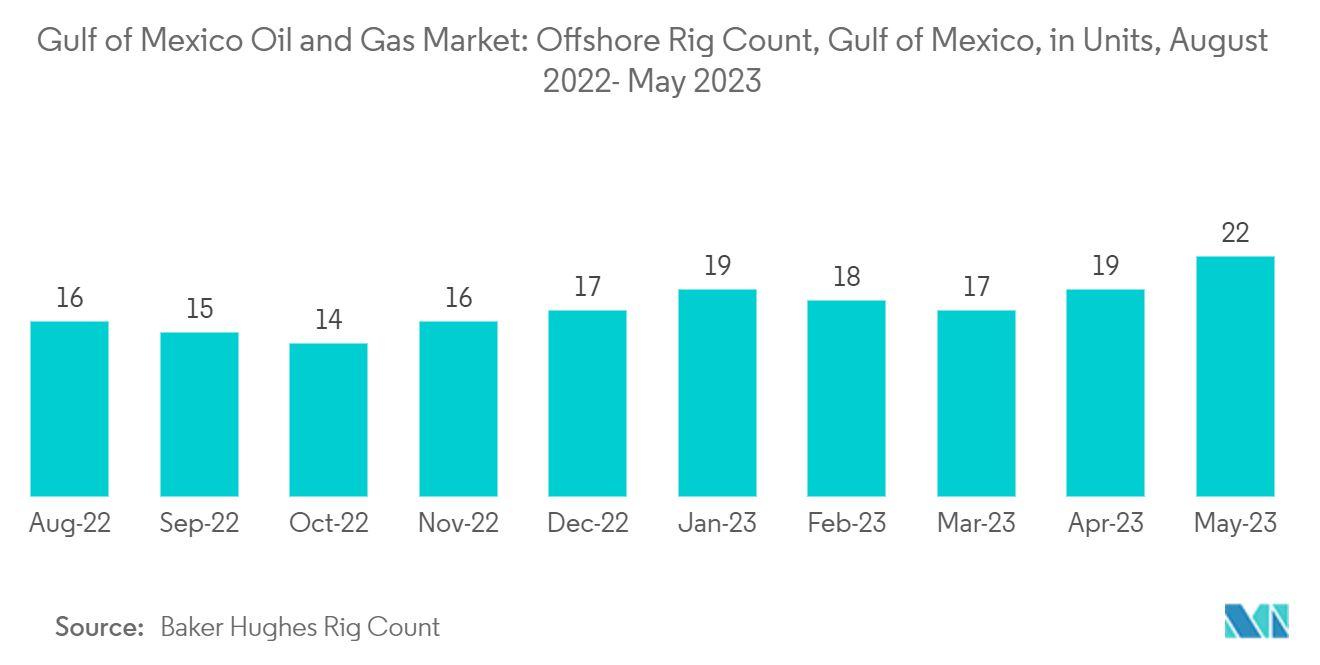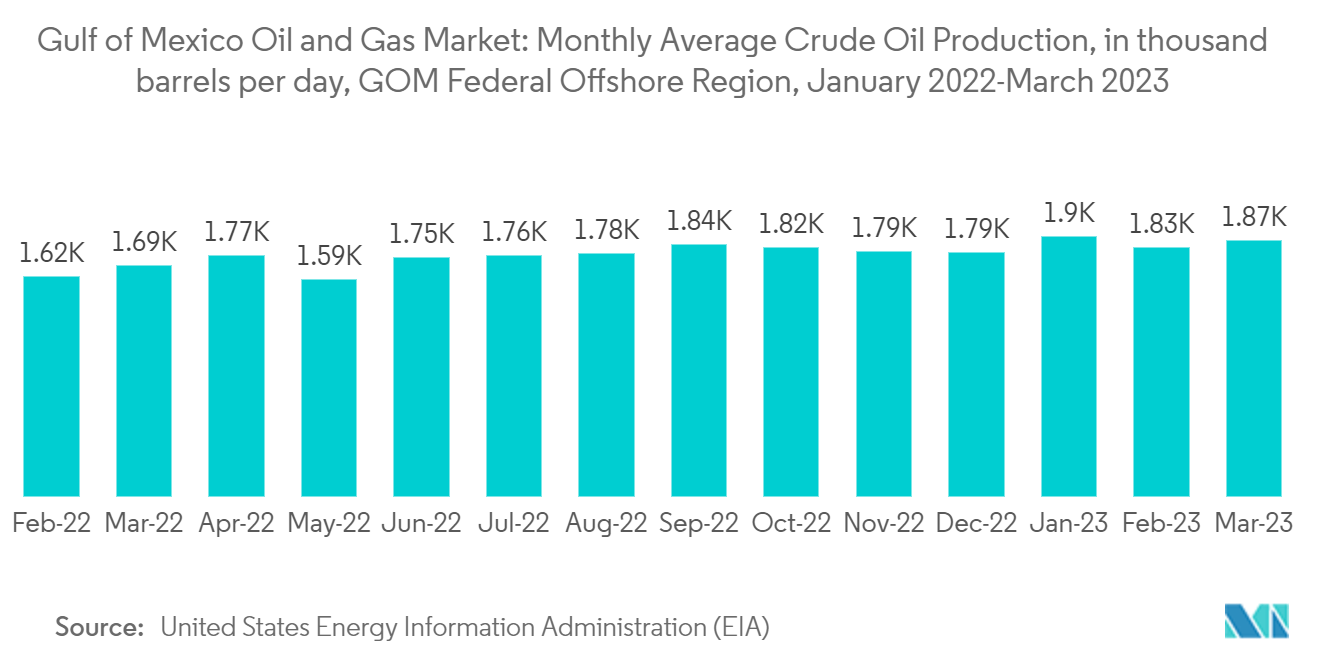Market Trends of Gulf Of Mexico Oil And Gas Industry
Upstream Segment Expected to Dominate the Market
- The Gulf of Mexico has significant oil and gas reserves in shallow and deepwater areas. The region has a long history of exploration and production activities, and there is still untapped potential, particularly in deepwater and ultra-deepwater regions. The exploration and development of these reserves drive the upstream segment's dominance in the Gulf of Mexico market.
- In recent years, as onshore oil fields have matured, offshore exploration and production (E&P) activities have seen a noticeable increase. The Gulf of Mexico region has experienced consistent growth in crude oil and natural gas production for four decades.
- This growth can be attributed to significant discoveries of oil and gas reserves in both shallow and deepwater areas of the Gulf and advancements in technology for offshore drilling operations. As of May 2023, the number of offshore rigs in the Gulf of Mexico had reached 22, indicating the continued expansion of E&P activities in the region.
- Furthermore, the expansion and exploration activities have led to various regional discoveries, further driving the market. For instance, in January 2023, Talos Energy, a Houston-based company, successfully identified significant oil and natural gas reserves in two deepwater discoveries in the US Gulf of Mexico. The company intends to develop these discoveries by establishing subsea tie-backs to its existing Ram Powell tension-leg platform (TLP).
- Furthermore, as deepwater and ultra-deepwater activities in the Gulf of Mexico continue to rise, production from these fields is anticipated to reach 7.6 million barrels per day in three years and 9 million per day in eighteen years. Consequently, there is an expected surge in demand for subsea production systems, which will further propel the market forward.
- Owing to the above points, the upstream segment is expected to dominate the Gulf of Mexico oil and gas market during the forecast period.

GOM Federal Offshore or the United States PART Expected to Dominate the Market
- The United States has a significant coastline along the Gulf of Mexico, providing direct access to the region's oil and gas reserves. This proximity gives U.S.-based companies a logistical advantage in exploration, production, and transportation activities.
- The United States has an extensive network of pipelines, platforms, and support services already established in the Gulf of Mexico. This infrastructure enables efficient extraction, processing, and distribution of oil and gas resources, contributing to the dominance of the U.S. in the market.
- According to the United States Energy Information Administration (EIA), the GOM Federal Offshore region's average crude oil production reached 1,742 thousand barrels daily in 2022. This figure is anticipated to experience a positive trajectory in the upcoming years, primarily driven by multiple upcoming projects in offshore waters.
- For instance, in April 2023, B.P. announced that it had successfully commenced oil production at its Argos offshore platform, which comes at a crucial moment, bolstering bp's status as a prominent producer in the deepwater region of the U.S. Gulf of Mexico. Argos, bp's fifth platform in the Gulf of Mexico, holds a gross production capacity of up to 140,000 barrels of oil per day. Notably, it is bp's first newly operated production facility in the region since 2008.
- Additionally, in March 2023, Shell Plc, a significant player in the oil industry, approved the development of the Dover offshore oil field in the Gulf of Mexico (GoM). Shell also revealed its intentions to establish the project as a subsea tieback to Shell's Appomattox offshore production platform. The project aims to commence production by the end of 2024, with peak rates estimated to reach 21,000 barrels of oil equivalent per day (boe/d).
- Such developments are expected to accelerate oil and gas production in the GOM Federal Offshore region in the near future.


